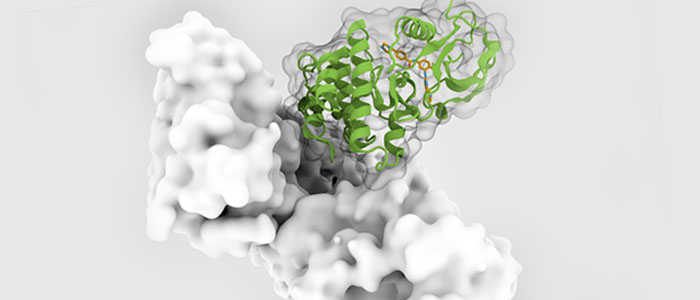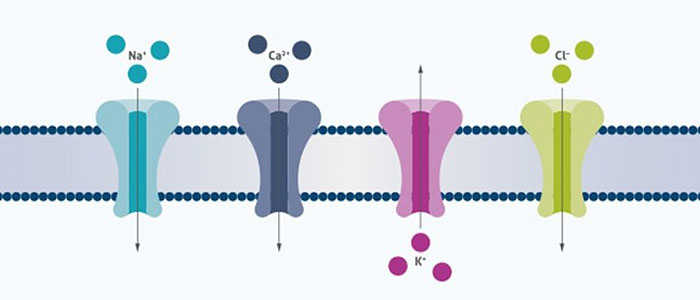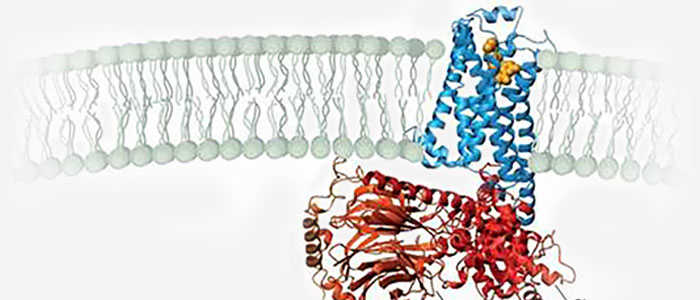Cell Line Lysates
Subcategory
Background
Overview
Cell line lysate is a mixture containing intracellular components obtained by treating cell lines with lysate. These components include, but are not limited to, proteins, nucleic acids (DNA and RNA), fragments of organelles, and other dissolved cellular components. The preparation of lysates is an important step in molecular and cell biology research because it provides the basic material for subsequent biochemical analysis and molecular detection.

Preparation Process
Cell collection: First, a sufficient number of cells need to be collected, which may involve culturing the cells to the appropriate density and then collecting the cells by methods such as centrifugation.
Lysis: The cells are suspended in a lysate, the type of lysate depends on the purpose of the study and the cell type. Groups of lysate destroy the cell membrane and cell wall, releasing the contents of the cell.
Oscillating or ultrasonic treatment: For mechanical lysis, it may be necessary to use an oscillator or ultrasonic processor to physically destroy the cells, ensuring adequate lysis.
Centrifugation: After cracking, the mixture usually needs to be centrifuged to remove insoluble cell debris and nucleic acids. This helps clarify the lysate and makes it more suitable for subsequent experiments.
Collection of lysate: The supernatant after centrifugation is the lysate, which contains proteins and other components dissolved in the cell. These lysates can be used for Western Blot, ELISA, immunoprecipitation, proteomic analysis and other experiments.
Storage: The lysate can be temporarily stored in the refrigerator at -80°C for subsequent analysis. For long-term storage, protease inhibitors are often added to prevent protein degradation.
Lysis Methods
When choosing a tissue lysis method, the following factors need to be considered:
Stability and activity requirements of target molecules; composition of the lysate, including the type and concentration of the detergent; downstream applications such as protein analysis, RNA extraction or metabolite analysis; the type and characteristics of the tissue, such as hardness, fat content, etc.
The following are some commonly used tissue lysis methods:
Mechanical cracking: The use of physical methods such as grinding, homogenizing, or ultrasonic treatment to destroy tissue structure and release cellular contents.
Chemical cracking: Specific cracking buffers containing detergents (e.g. Triton X-100, NP-40, etc.) and other ingredients (e.g. Protease inhibitors) are used to crack the cell membrane.
Freeze-thaw lysis: Destruction of cell membranes by rapidly freezing and thawing tissue samples, releasing cell contents.
Enzymatic cleavage: Tissue is treated with specific enzymes, such as trypsin, to digest the extracellular matrix and cell membranes, releasing cell contents.

Advantages
Comprehensiveness: Cell lysates contain almost all of the dissolved components of the cell, such as proteins, nucleic acids, metabolites, etc., which allows researchers to conduct a comprehensive analysis of the entire biochemical state of the cell.
Wide applicability: The lysate can be used for a variety of downstream applications, such as proteomic analysis, gene expression analysis, enzyme activity detection, immunoprecipitation, Western Blot, etc.
Representativeness: Lysate is a good representation of the state of the original cell because it contains all the dissolved components within the cell, providing a comprehensive sample for study.
Controllability: By adding specific inhibitors, such as protease inhibitors, unwanted enzymatic reactions during cleavage can be controlled, thereby protecting sensitive molecules in the lysate.
Notes
Quality control. The quality of the lysate is critical to the success of subsequent experiments. Therefore, the cleavage efficiency, the purity of the lysate and the stability of the protein are all factors that need to be carefully controlled.
Set the control. In order to ensure the reliability of experimental results, control groups (such as untreated cell lysates) are often required for comparison.

Applications
- Protein analysis: Proteins in lysates can be used for Western Blot, enzyme-linked immunosorbent assay (ELISA), immunoprecipitation (IP) and other techniques to detect and quantify the expression and modification status of specific proteins.
- Gene expression studies: Through the RNA in the lysate, gene expression analysis can be performed, such as real-time quantitative PCR (qPCR), RNA sequencing (RNA-SEQ), etc., to study the transcriptional activity of specific genes.
- Cell signaling: Lysates can be used to analyze the activation state of intracellular signaling pathways, and reveal the molecular mechanism of cell response to external stimuli by detecting the phosphorylation, ubiquitination and other modifications of specific signaling molecules.
- Metabolite analysis: Metabolites in lysates can be analyzed by techniques such as mass spectrometry to help study the metabolic state and pathways of cells.
- Drug screening and toxicity testing: lysates can be used to assess the effects of drugs on cells, such as drug-induced cytotoxicity, apoptosis, and cell cycle changes.
- Disease model research: In disease models, lysates can be used to study molecular mechanisms associated with diseases, such as cancer, neurodegenerative diseases, etc.
Case Study
Case Study 1: HeLa Whole Cell Lysate
Mass spectrometry-based chemical proteomic approaches using limited proteolysis have become a powerful tool for the identification and analysis of the interactions between a small molecule (SM) and its protein target(s). Gracilioether A (GeA) is a polyketide isolated from a marine sponge, for which we aimed to trace the interactome using this strategy. DARTS (Drug Affinity Responsive Target Stability) and t-LiP-MS (targeted-Limited Proteolysis-Mass Spectrometry) represented the main techniques used in this study. DARTS was applied on HeLa cell lysate for the identification of the GeA target proteins, and t-LiP-MS was employed to investigate the protein's regions involved in the binding with GeA. The results were complemented through the use of binding studies using Surface Plasmon Resonance (SPR) and in silico molecular docking experiments. Ubiquitin carboxyl-terminal hydrolase 5 (USP5) was identified as a promising target of GeA, and the interaction profile of the USP5-GeA complex was explained.

(Alessandra Capuano, 2024)
Fig1. Coomassie-stained gel with DARTS sample. Red arrows show bands with increasing intensities in accord with increasing amounts of GeA.
Case Study 2: 293 Whole Cell Lysate
Adeno-associated viruses (AAVs) are the vector of choice for delivering gene therapies that can cure inherited and acquired diseases. The current AAV purification platform hinges on the capture step, for which several affinity resins are commercially available. But these adsorbents suffer from low biochemical stability and high cost, and impose harsh elution conditions (pH < 3) that can harm the transduction activity of recovered AAVs. Addressing these challenges, this study introduces peptide ligands that selectively capture AAVs and release them under mild conditions (pH = 6.0). The peptide sequences were identified by screening a focused library and modeled in silico against AAV serotypes 2 and 9 (AAV2 and AAV9) to select candidate ligands. Selected peptides were conjugated to Toyopearl resin and evaluated via binding studies against AAV2 and AAV9, demonstrating the ability to target both serotypes on par with commercial adsorbents.

(Wenning Chu, 2023)
Fig2. Values of relative transduction efficiency of AAV2 purified from a clarified HEK 293 cell lysate.
Case Study 3: Mouse Neuro-2a Cell Lysate
Recent findings indicate that histidine triad nucleotide-binding protein 1 (HINT1) is implicated in the pathophysiology of certain psychiatric disorders and also exhibits tumor suppressor properties. However, the authentic functions of HINT1 in cellular physiology and especially its role in Ca(2+) signaling remain unclear. Here, we studied Ca(2+) signaling in cultured embryonic fibroblasts derived from wild-type control and HINT1 knockout (KO) mice. The resting cytosolic Ca(2+) level (measured with fura-2) was not altered in fibroblasts lacking HINT1. Expression of canonical transient receptor potential (TRPC)3 and TRPC6, which function as ROCs, was not altered in HINT1 KO fibroblasts. Silencer RNA knockdown of HINT1 in Neuro-2A cells markedly downregulated Orai1 and STIM1 protein expression and significantly (by 2.5-fold) reduced ATP-induced Ca(2+) influx, while ATP-evoked Ca(2+) release was not changed.

(Cristina I Linde, 2013)
Fig3. Western blot analysis of HINT1. Brain whole cell lysate (20 μg/lane) from WT and HINT1 KO mice were used as a control.
Advantages
- Strong scientific research strength. Our research team has a rich academic background and we are always exploring more popular products.
- Pure and efficient. We use advanced biotechnology to ensure unparalleled purity and activity in each batch, making your test results more accurate and reliable.
- Technical support. To provide professional technical support, our technical department can answer customers' technical problems in a timely manner, and provide professional, comprehensive and satisfactory service.
All the lysates provided by Creative BioMart are prepared by homogenization in modified RIPA buffer. The lysate was boiled for 5 min in 1×SDS sample buffer (50 mM Tris-HCl pH 6.8, 12.5% glycerol, 1% sodium dodecylsulfate, 0.01% bromophenol blue) containing 5% β-mercaptoethanol. Cell debris was removed by centrifugation. Protein concentration was determined with Bio-Rad protein assay.
Creative BioMart can provide various types of Cell Line Lysates to meet customer’s different research goals. Whether you want to measure enzyme activity, verify function, or explore protein structure, you can find the right product you want. You can also let us know if you have any customized requirements. Please contact us for more product details.
References
- Capuano A.; et al. Chemoproteomics Reveals USP5 (Ubiquitin Carboxyl-Terminal Hydrolase 5) as Promising Target of the Marine Polyketide Gracilioether A. Mar Drugs. 2024;22(1):41.
- Chu W.; et al. Peptide ligands for the affinity purification of adeno-associated viruses from HEK 293 cell lysates. Biotechnol Bioeng. 2023;120(8):2283-2300.
- Linde CI.; et al. Histidine triad nucleotide-binding protein 1 (HINT1) regulates Ca(2+) signaling in mouse fibroblasts and neuronal cells via store-operated Ca(2+) entry pathway. Am J Physiol Cell Physiol. 2013;304(11):C1098-C1104.
Contact us or send an email at for project quotations and more detailed information.
Quick Links
-

Papers’ PMID to Obtain Coupon
Submit Now -

Refer Friends & New Lab Start-up Promotions








